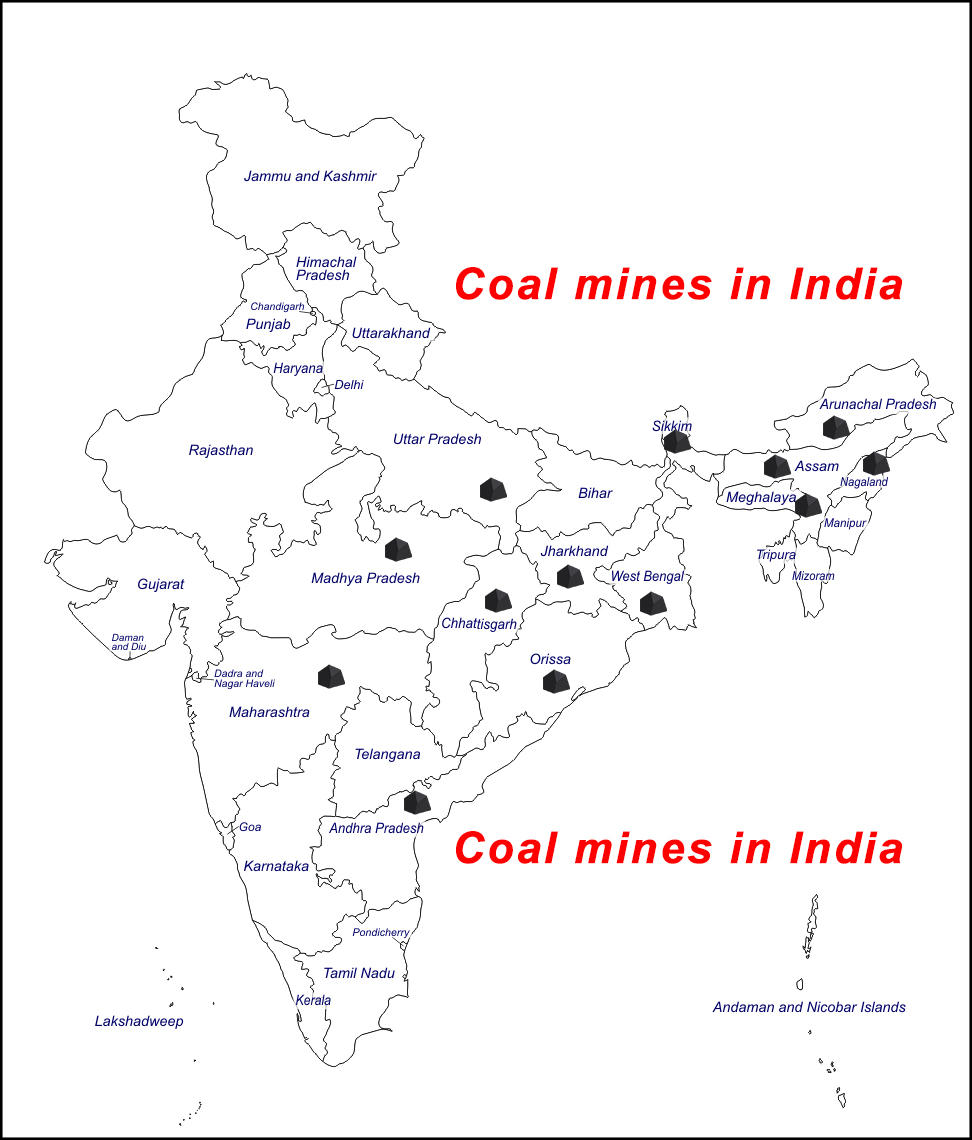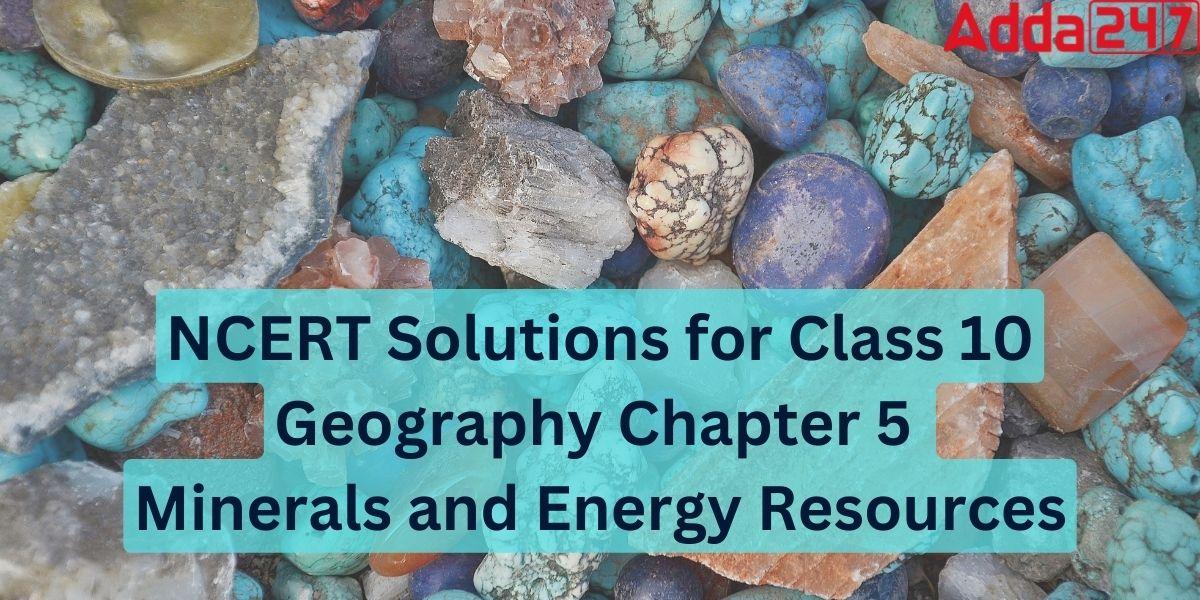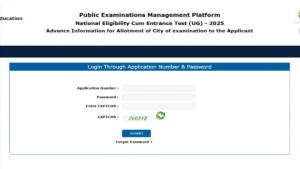Table of Contents
NCERT Solutions for Class 10 Social Science Geography Chapter 5 Minerals and Energy Resources- Introduction
NCERT Solutions for Class 10 SST Geography Chapter 5 Minerals and Energy Resources Notes are given in the article.NCERT Solutions Class 10 is the best resource for obtaining a good score in the class 10 board Examination. The NCERT Solutions will aid your preparation for the CBSE examinations for Class 10 SST Geography Chapter 5 Minerals and Energy Resource. Here are Adda247 Expert faculty team prepared NCERT Solutions for Class 10 SST SST Geography Chapter 5 Minerals and Energy Resource along with in-text questions and exercises of that chapter for a better grasp of the topics. These solutions will help you understand the concepts covered in the chapter completely. So that students can pass their board exams with good scores. Keep learning with Adda247.
Read:NCERT Solutions for Class 10 Social Science Geography Chapter 6 Manufacturing Industries
NCERT Solutions for Class 10 SST Geography Chapter 5 Minerals and Energy Resources: Quick Revision
Let’s quickly review the subjects and subtopics covered in Class 10 SST Geography Chapter 5 Minerals and Energy Resource.
- What is a mineral
- Mode of occurrence of minerals
- Ferrous Minerals
- Non-Ferrous Minerals
- Non-metallic Minerals
- Rock Minerals
- Conservation of minerals
- Energy Resources
- Conventional sources of energy
- Petroleum
- Natural Gas
- Electricity
- Non-Conventional Sources of Energy
- Nuclear or Atomic Energy
- Wind power
- Solar Energy
- Biogas
- Conservation of Energy Resources
NCERT Solutions for Class 10 SST Geography Chapter 5 Minerals and Energy Resources Pdf
NCERT Solutions for Class 10 SST Geography Chapter 5 Minerals and Energy Resources are given in pdf format so that students can easily download it for future use. Click here to download NCERT Solutions for Class 10 Geography Chapter 5 Minerals and Energy Resources Question Answer
NCERT Solutions for Class 10 SST Geography Chapter 5 Minerals and Energy Resources: Video Explanation
NCERT Solutions for Class 10 SST Geography Chapter 5 Minerals and Energy Resources Question Answer
1. Multiple choice questions.
(i) Which one of the following minerals is formed by the decomposition of rocks, leaving a residual mass of weathered material?
(a) coal (b) bauxite (c) gold (d) zinc
Ans:(a) coal
(ii) Koderma, in Jharkhand is the leading producer of which one of the following minerals?
(a) bauxite (b) mica (c) iron ore (d) copper
Ans:(b) mica
(iii) Minerals are deposited and accumulated in the strata of which of the following rocks?
(a) sedimentary rocks (b) metamorphic rocks (c) igneous rocks (d) none of the above
Ans:(a) sedimentary rocks
(iv) Which one of the following minerals is contained in the Monazite sand?
(a) oil (b) uranium (c) thorium (d) coal
Ans: (c) thorium
2. Answer the following questions in about 30 words.
(i) Distinguish between the following in not more than 30 words.
(a) ferrous and non-ferrous minerals
(b) conventional and non-conventional sources of energy
Ans:(a) ferrous and non-ferrous minerals:
| Distinguish between the ferrous and non-ferrous minerals |
|
| Ferrous Minerals | Non-ferrous Minerals |
Example: Manganese and iron ore
|
1. There is no iron in these minerals.
2. Many metallurgical, engineering and electrical industries depend on them greatly.
3. India has rather modest non-ferrous mineral deposits.
Examples: Bauxite, lead, and gold,
|
(b) conventional and non-conventional sources of energy
| Distinguish between the conventional and non-conventional sources of energy | |
| Conventional sources of energy | Non-conventional sources of energy |
|
|
(ii) What is a mineral?
(iii) How are minerals formed in igneous and metamorphic rocks?
Minerals are found in igneous and metamorphic rocks in cracks, fissures, and faults. Smaller occurrences are known as veins, whereas bigger ones are known as lodes.It can be created as follows:
- When liquid/molten and gaseous minerals are driven upward via cavities toward the earth’s surface, they cool and solidify to create veins or lodes.
- Metals such as tin, copper, zinc, and lead are extracted from veins and lodes.
(iv) Why do we need to conserve mineral resources?
3. Answer the following questions in about 120 words.
(i) Describe the distribution of coal in India.
- Coal resources are also abundant in the southern region of Andhra Pradesh and the eastern part of Maharastra. Jharkhand, Chhattisgarh, Orissa, and Madhya Pradesh contribute two-thirds of all coal produced in India. Jharkhand and Chhattisgarh account for almost 40% of total coal production in India.

(ii) Why do you think that solar energy has a bright future in India?
India, as a tropical country, receives a lot of sunlight. As a result, there are several opportunities to harness solar energy. Solar energy is a non-traditional energy source, although it is gaining popularity in rural and remote areas, reducing households’ reliance on firewood and dung cakes. This, in turn, aids in environmental conservation and guarantees an appropriate supply of manure in agriculture.
- Because the Tropic of Cancer crosses virtually through the center of India, the country experiences an average of 250-300 sunny days every year.
- It is predicted that India receives 5000 trillion kWh of solar energy per year.
- In India, many government programmes for solar energy are being implemented, including rooftop schemes, solar park schemes, visibility gap funding, the UDAY scheme, solar pumps, and the establishment of solar cities.
- India is a member of the International Solar Alliance, which has its headquarters in Gurugram, India.
NCERT Solutions for Class 10 SST Geography Chapter 5 Minerals and Energy Resources-FAQs
Q.What is a mineral?
Q.How can I access the online PDF of the NCERT Solutions for Class 10 SST Geography Chapter 5?
Ans. you can download the detailed NCERT Solutions for Class 10 SST Geography Chapter P5 DF from the link given in the article.
Q.How does use Adda247’s NCERT Solutions for Class 10 Social Science Geography Chapter 5 Minerals and Energy Resources benefit you?
Ans. The advantages of using Adda247’s NCERT Solutions for Class 10 Social Science Geography are as follows:
- A video explanation is provided to students in addition to the NCERT solution.
- Additionally, a PDF is included, which can be downloaded and saved for later use.



 NEET City Intimation Slip 2025 Available...
NEET City Intimation Slip 2025 Available...
 CUET UG City Intimation Slip 2025: Relea...
CUET UG City Intimation Slip 2025: Relea...
 CUET UG Date Sheet 2025 @cuet.nta.nic.in...
CUET UG Date Sheet 2025 @cuet.nta.nic.in...










